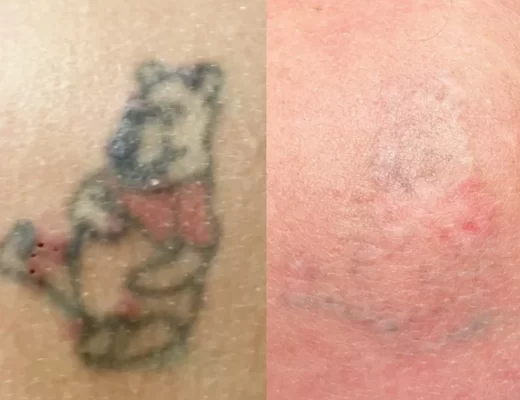Scars are a natural part of the healing process when the skin is injured. They form after the body repairs and replaces damaged skin cells. The length of time it takes for a scar to flatten depends on various factors, including the type and severity of the injury, individual healing abilities, and proper scar management techniques.
Types of scars
There are different types of scars, each with their own characteristics and healing timelines.
1. Normal scars
Normal scars occur when the deeper layers of the skin, such as the dermis, are affected. These scars may appear as a thin line or slightly raised area and gradually fade and flatten over time. It can take anywhere from several months to a year or more for normal scars to flatten completely.
2. Keloid scars
Keloid scars are characterized by their raised and thickened appearance. They form when the body produces excessive collagen during the healing process. Keloid scars can take longer to flatten compared to normal scars, and their healing time can range from several months to years.
3. Hypertrophic scars
Hypertrophic scars are similar to keloid scars in terms of their raised appearance. However, they do not extend beyond the boundaries of the original wound. These scars typically flatten and become less noticeable within one to two years.
Factors affecting scar healing
Several factors can influence how long it takes for a scar to flatten:
1. Depth and size of the wound
Deeper and larger wounds may take longer to heal and flatten compared to smaller ones. Surgical incisions or traumatic injuries often result in more prominent scars that require more time to flatten.
2. Location of the scar
The location of the scar on the body can affect its healing time. Areas with constant movement or tension, such as joints or the chest, may experience slower scar flattening due to increased stress on the wound.
3. Age
Younger individuals tend to heal faster than older adults. The skin’s ability to regenerate and produce collagen diminishes with age, which can prolong the scar flattening process.
4. Genetics
Genetics play a role in scar healing as well. Some individuals may be more prone to developing keloid or hypertrophic scars, which can result in a longer flattening time.

Scar management techniques for faster flattening
While scars naturally flatten over time, there are steps you can take to help expedite the process:
1. Keep the scar clean and moisturized
Gently clean the scar with mild soap and water, then apply a moisturizer to keep the area hydrated. Well-moisturized scars tend to flatten more effectively.
2. Protect the scar from sun exposure
UV rays can darken and worsen the appearance of scars. Apply sunscreen or keep the scar covered when exposed to the sun to prevent further damage.
3. Apply scar treatment products
There are various over-the-counter scar treatment products available, such as silicone sheets or gels, which can help promote scar flattening. These products work by hydrating the scar and providing pressure to encourage collagen remodeling.
4. Consult with a dermatologist
If you are concerned about the appearance or flattening progress of your scar, it is advisable to consult with a dermatologist. They can provide professional advice and recommend specialized treatments, such as laser therapy or steroid injections, to expedite scar flattening.
In conclusion, the time it takes for scars to flatten varies depending on the type of scar, the location, and individual factors. While scars naturally fade and flatten over time, proper scar management techniques can help speed up the process. It is important to be patient with the healing process and consult with a dermatologist if needed for further guidance.

